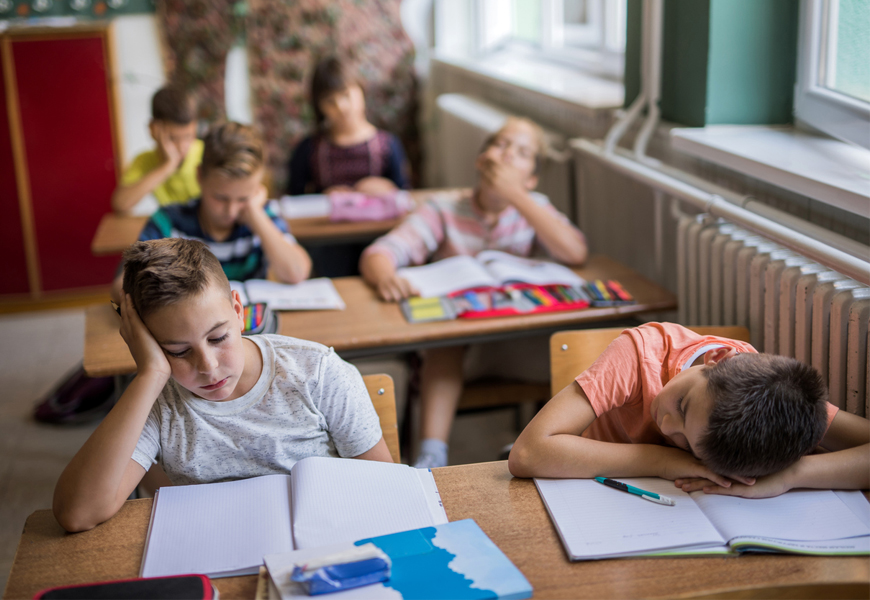“It’s hot as Hell out.”
This seems to be how people have been greeting each other this week in Toronto. Pool owners and cottage goers may be loving this resurgence of summer heat, but not everyone is so happy with the heat wave.
Teachers are voicing valid concerns about the safety and well-being of their students in classrooms and their own working conditions. On Monday, my sister, a middle school teacher, made an emergency plan for what to in the very real likelihood one of her students vomited or passed out. With the temperate inside classrooms reaching nearly 40 degrees Celsius with the humidex, it was a necessary action. Since she is eight months pregnant, it could easily have been her who first succumbed to heat exhaustion.
Schools boards have suggested using fans, opening windows, and drinking lots of water. Teachers maintain it isn’t enough. The air inside the room is stifling, and opening windows often means having to open blinds and letting in the scorching sun. One teacher says she has to choose between opening the windows and suffering from the inevitable rise in temperature due to sun exposure, or keeping the windows closed and dealing with the hot, stagnant air.
And the smell. As you can imagine, a room full of pubescent children, in what is essentially a sauna, smells like gym class in Hades. The stench is unbearable, and the air is unsanitary.
In addition to the danger posed by heat and dehydration, and permeation of body odour, there is the risk of food spoilage and foodborne illness. Lunches are not refrigerated, and ice packs can’t hold up within the hot boxes of lockers. Food is sitting out for hours at a time in temperatures which bacteria thrive in.
Safety aside, the heat disrupts the ability to both teach and learn. Instead of focusing on imparting the lesson, teachers are forced to use their time and resources to cool the classroom and the kids down. Technology is forgone to prevent adding additional heat sources to the room. Frequent trips to water fountains and the inevitable washroom breaks that come with them interrupt the flow of lessons and cause students to miss sections of the subject.
Many children with special needs are highly sensitive to heat, making meltdowns in the classroom more likely. This affects the well-being of these children and creates more class disruption.
And how well can children learn when they are overheated? If you have ever sat in a hot car, you know the discomfort. Imagine trying to learn new math concepts in that environment.
By the end of the day, students and teachers alike are exhausted from the heat exposure, but homework and lesson planning still need to take place. It is an incredible amount of physical and mental stress to place on everyone in the school.
It may seem silly to be addressing it for a freak late September heat wave. Can’t they just suck it up for a week? But it isn’t just this one heat wave. In recent years, temperatures in the Spring and Fall have been climbing. Overheated classrooms are common at the end of the school year when students are taking standardized tests and exams that affect their futures. It seems inevitable that testing in a furnace would skew results.
This isn’t just a week here and there of heat, the problem has worsened to the point that kids are spending months in uncomfortably hot classrooms not conducive to learning. With climate change, it is likely to get worse, not better. It’s time for school boards and the Ministry of Education to make a plan that consists of more than bringing a fan and drinking lots of water.
But putting air conditioning in schools would be expensive. This is absolutely true, there is no denying that. How about reallocating the funds from the useless EQAO testing to making schools safe and comfortable for our children and staff? EQAO does little to improve education. Arguably, it hurts it. Allowing children to attend school without the risk of hospitalization due to overheating would be a better use of this funding.
If the powers that be do not start making a budgeting plan for cooling the schools, they had better start a fund for the inevitable lawsuit when something tragic happens. We’ve seen how quickly children can succumb to heat in hot cars. How long before it happens in a hot classroom? Hopefully, an action plan is put in place before it does.
In the meantime, when temperatures reach the highs we saw this week, schools need to close. Full stop. Factory workers, military personnel, and many others in the workforce do not work when temperatures rise to these levels. Their employers rightly put their safety first. But we expect teachers and children to endure these conditions.
We’re past discomfort and sucking it up. We’re endangering children and staff, and creating unacceptable work environments. Step up, Ministry of Education, and address this properly.

Leave a Reply